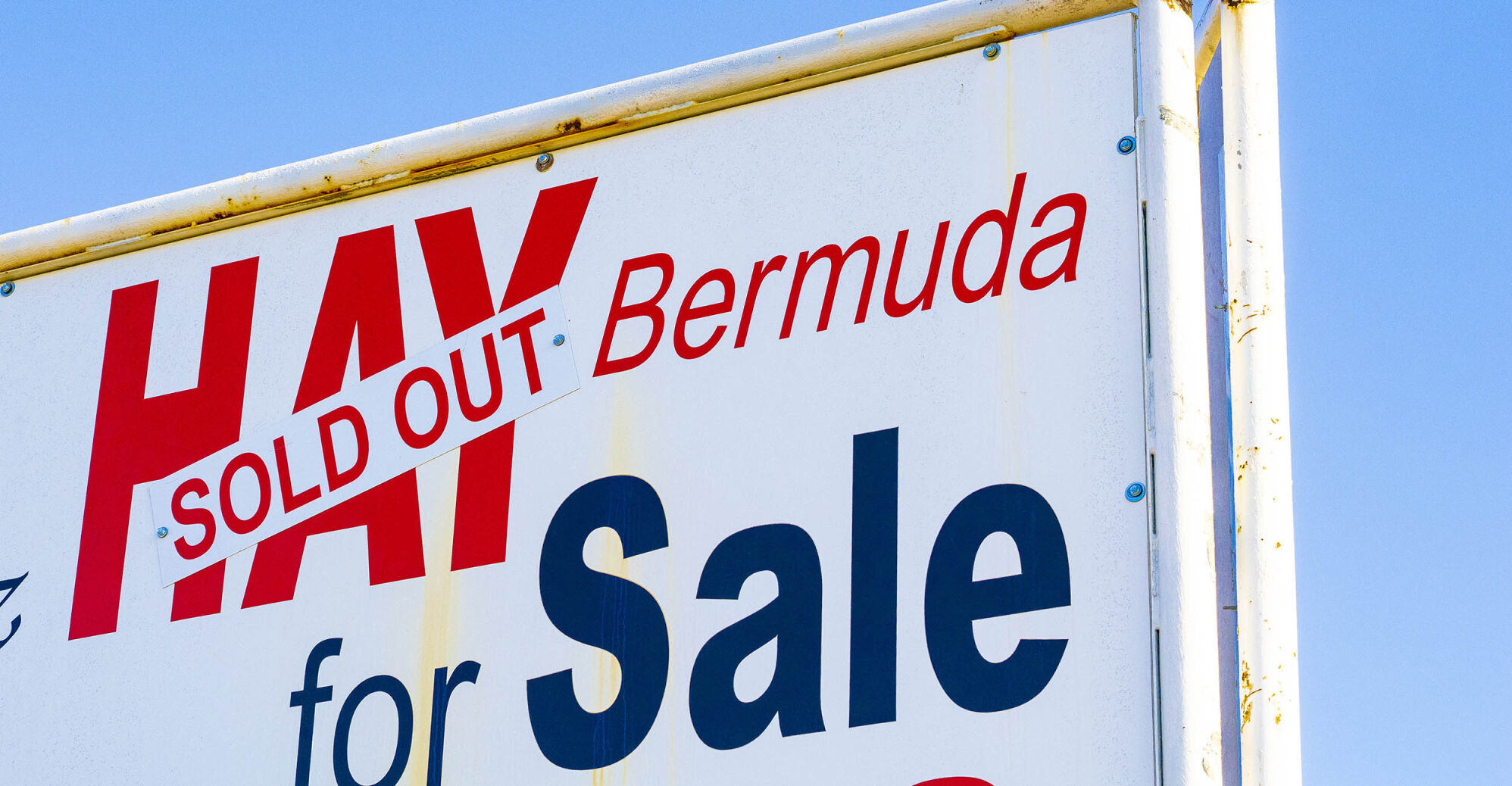Buyer beware: Scams, drought and other factors affecting hay sales this year

Livestock owners who plan to purchase hay over the next few months need to make careful and informed decisions to protect their animals, especially when purchasing hay from out of state.
Buyers should be aware that the drought has significantly impacted forage quality this year. Low hay yields resulted in many producers baling up failed crops and other grass varieties not typically harvested as a forage. As a result, overall hay quality is lower.
“During the last drought, there was a lot of hay baled very mature along roadsides and abandoned fields with the lowest density setting the baler could handle to produce light, low-density bales then transported across two states. Hay should be tested before purchase and priced per ton instead of by the bale.” said Paul Beck, Oklahoma State University Extension beef nutrition specialist.
Mark Johnson, OSU Extension livestock evaluation specialist, advises answering these questions when buying hay:
-
Where is it located? Hay cannot be moved from fire ant endemic areas without taking steps to ensure there are no fire ants being transported to areas designated free of fire ants.
-
When was it baled? 2021? 2022? Older hay may have more spoilage.
-
How has it been stored? In a barn or outside? On the ground or on pallets?
-
How is it wrapped? Net wrapped bales keep better than those wrapped in twine.
-
What is the size of the bales?
Request pricing based on tonnage or weight, not per bale.
A laboratory test is a critical step in determining the nutritive value of any lot of hay offered for sale. The National Forage Testing Association provides contact information for commercial laboratories that are certified, indicating they have met testing accuracy standards. Dave Lalman, OSU Extension beef cattle specialist, recommends evaluating the following in a hay test report:
Moisture content: The moisture content is an important factor in determining hay value because water is expensive to transport, and excessive moisture promotes mold and spoilage.
Protein concentration: A dry, gestating cow requires about 8% of her diet to be dry matter in protein. If the hay contains only 4% protein, half of the cow’s protein requirement will need to come from another source.
Energy or digestibility: Mature, low-quality hay is low in digestibility or energy. When digestibility is low, cattle can’t consume enough forage to meet their energy requirements. A dry, gestating cow requires a minimum of 52% total digestible nutrients. If the TDN is lower, additional energy will need to come from another source to keep the cows from losing weight and condition.
The relative feed value, or RFV, is a long-standing index based on hay chemical composition that can be used to determine the relative feeding value of hay. RFV is one number used to decide if the hay is worth its asking price in the current market.
Vitamins and minerals: Hay baled later in the growing season contains little beta-carotene, which is the precursor to vitamin A. Therefore, vitamin A supplementation is critical when feeding low-quality forage. Macro and micro minerals also decline as the maturity progresses.
Evaluate livestock hay needs and price by comparing animal requirements to the nutritive value of the hay. Watch a hay analysis example on SUNUP, OSU Agriculture’s television show. Local Extension educators can also assist in interpreting hay test reports and developing a well-balanced winter nutrition program.
For horse owners buying hay, Kris Hiney, OSU Extension equine specialist, suggests considering these factors:
Most maintenance horses are relatively easy to feed and can be fed lower quality diets (or lower quantity) than are typically fed.
Horses will consume less of lower quality hay. If the relative feed value drops due to a higher acid detergent fiber, horses will reduce their intake.
Acknowledge there is no way to avoid a higher feed bill this fall and winter. Livestock and horse owners must decide if they want to spend more money on hay or alternative forage sources.
“Remember some of the alternative or low-quality forages a cow might do okay on may not work for horses,” Hiney said. “You have to remember that as a monogastric hind gut fermenter, horses will need higher quality forages than cows can get away with.”
Finally, hay buyers should watch out for scams. Hay posted for sale online is not a guarantee. Always purchase hay from a trusted or verified source and never pay for bales without first viewing them in person.



